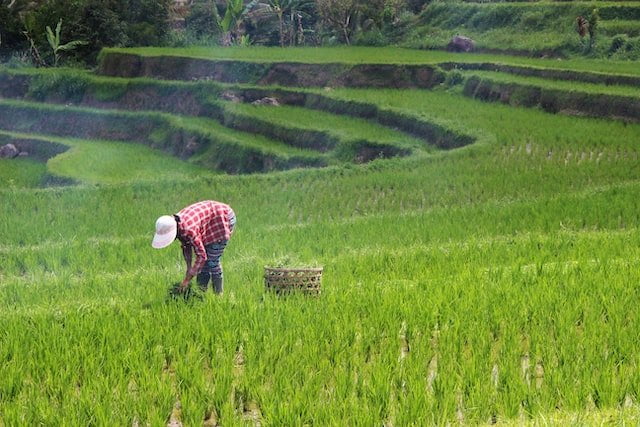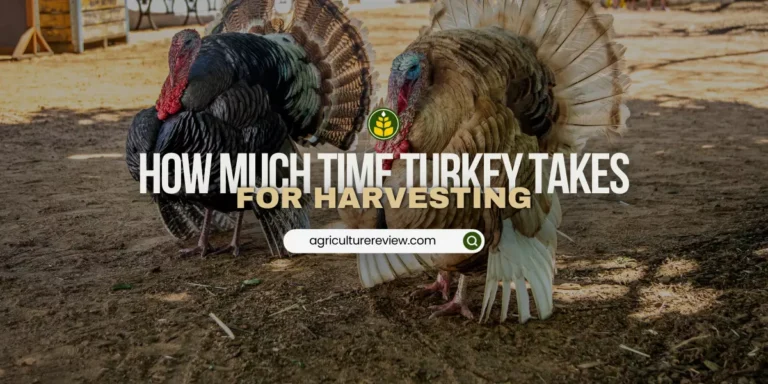From this ultimate guide on cultivation of rice get to know scientific and environment friendly practices of rice farming. Learn about soil, climate, temperature, seed rate, sowing time, field preparation, irrigation, fertilizers, harvesting, and yield.
Table of Contents
परिचय
Rice is a cereal crop that belongs to the grass family Graminae. Rice plant can grow to 2 to 6 feet tall with a round jointed stem, long pointed leaves and edible seeds borne in the dense head on separate stalks.
Rice is one of the major crop cultivated in India, other parts of the Asia and rest part of the world. Methods of cultivation of rice can differ from place to place.
चावल is mainly cultivated because of its nutrition value and health benefits.
Rice is a cholesterol free food and is a good source of energy. It helps in blood pressure management, cancer prevention, prevent skin problems, supports cardiovascular health and is a rich source of Carbohydrates, protein and healthy fats. It also contain Vitamin-B6, Calcium, Magnesium and Iron.
वानस्पतिक वर्गीकरण
- वानस्पतिक नाम: ओरिजा सैटिवा
- परिवार: Poaceae or Gramineae
- गण: साइपरलेस
- क्लास: Liliopsida / Monocotyledons
- डिवीजन: मैग्नोलियोफाइटा
- गुणसूत्र संख्या: 24
Origin & Geographical Distribution
Origin of Rice: Yangtze River valley in China.
Rice is the staple food in many parts of the world, especially in Asian countries. China leads in overall rice production in the world. India is the second highest producer of rice in the world followed by Indonesia, Bangladesh, Vietnam, Thailand, Myanmar, Philippines, Brazil and Pakistan.
Rice is the world’s leading food crop, cultivated over an area of about 165 million hectares. It provides about 22 percent of the world’s supply of calories and 17% of the proteins.
Maximum area under rice cultivation is in Asia. Among the rice growing countries, India has the largest area(44.8 million hectares) followed by China and Indonesia. Total rice production of India in the year 2019 – 2020 is estimated to be around 117.47 million tonnes.
The average yield per hectare is found to be highest in Punjab(3346 kg/ha).
Rice Cultivation Guide

मिट्टी
For the cultivation of rice wide variety of soils such as silt soil, loamy soil, sandy loam soil, etc. This crop can also tolerate acidic and alkaline soil to a certain level. Loamy or Clay soils that is rich in organic matter is considered ideal for the cultivation of rice.
Soil pH range of 5.5 – 6.5 pH is considered good for cultivation of rice.
जलवायु और तापमान
Ideal climate to grow rice is hot and humid climate but this paddy crop can be cultivated in wide varying condition of climate and altitude. Ideal temperature to grow rice varies from 20 to 40 degrees Celsius.
In India, rice is cultivated mainly on two types of soil, uplands and lowlands.
A. Upland rice cultivation (Rain fed rice)
(a) Drilling
(b) Broadcast
B. Lowland rice cultivation (Irrigated rice)
1. Cultivation in puddled soil
(i) Transplanting method
(a) Nursery or traditional method
(b) Dapog method
(c) System of rice intensification (SRI)
ii) Direct seeding method
(a) Sowing in line
(b) Broadcast
2.Cultivation of rice in un-puddled lands by sowing seeds in dry soils
(i) By drilling
(ii) Broadcast
Upland Rice Cultivation
The upland rice cultivation is mostly adopted in areas which receive an annual rainfall of 800-1000 mm and irrigation facilities are not available. In this system of cultivation, farmer has to depend upon rain water. Due to failure of monsoon, the farmer has to bear a heavy loss.
A vast tract of paddy in Uttar Pradesh, Bihar, Orissa, parts of Tamil Nadu and Andhra Pradesh is under rainfed upland situation.
खेत की तैयारी
After harvesting the rabi crops in April-May, the field should be ploughed with soil turning plough. The field should be prepared and bunds should be made around the field just after the first shower of monsoon. This will check loss of rain water by run-off.
Sowing of Seeds & Seed Rate
Under upland rice cultivation, no definite recommendation for time of sowing could be made because of unavailability of irrigation water and uncertainty of monsoon. However, the crop must be sown soon after monsoon sets in and 15-20 cm deep soil layer becomes completely wet.
The ideal time in north India is between end of June and first week of July. If the sowing is delayed, crop is adversely affected because of soil and atmospheric drought due to aberrant weather conditions during the grain filling stage. In some rice growing areas, dry seeding a little before onset of monsoon is practised. The seed remains in the soil, which germinates with the onset of rains.
Under upland conditions, drilling or line sowing is always better than broadcast because line sowing facilitates the cultural operations and enables to identify the weeds even at the early stage for weeding purpose.
Usually sprouted seed should be sown in rows 30 cm apart at a depth not more than 5cm. The moisture stress condition may result in poor germination, therefore, about 25% higher seed rate than the recommended rate(100-120 kg/ha) should be used.
Drill the seeds with seed drill or behind the plough with the help of funnel in rows after applying fertilizer. The row to row distance should be 20 cm.
About 60 Kg seed/hectare is recommended. For obtaining an uniform plant population and higher crop yields, it is advisable to thin out the excess plants or re sowing in gaps in the rows after about 2-3 weeks of sowing.
Irrigated or Low land Rice Cultivation
This system of rice cultivation is practiced in areas having an assured and adequate supply of water. In this system, sprouted seeds may be directly sown in puddled field or the crop may be transplanted with seedlings raised in a nursery. It is also called as medium land rice for those areas, which receive an annual rainfall of 1,000-1,500 mm.
खाद
In upland rice, organic manures(FYM or compost) @10-15 tonnes/ha should be incorporated 4-6 weeks before sowing.
A basal dose of 50-60 kg N, 60 kg P2O5, 60 kg K2O/ha at sowing followed by top dressing of 25 kg N/ha each at tillering stage(30 days after sowing) in between panicle-initiation and boot leaf stage(45 days after sowing) should be applied.
सिंचाई
Rice requires 5000 litres of water to produce a kg of grain. The high water requirement of rice is mainly due to percolation losses. The water requirement for rice cultivation is 2,500 mm depending upon growing season, soil type, crop duration and management practices, etc.
Transplanted rice, in general, requires about 40-60, 200-300 and 800-1000 mm of water, respectively for nursery raising, puddling and crop raising in main field from transplanting to physiological maturity.
खरपतवार प्रबंधन
Infestation of weeds in rice fields may reduce the grain yield by 50-90% in upland, 30-35% in drilled irrigated and 15-20% in transplanted crop. Pendimethalin or Thiobencarb @1.5kg/ha should be sprayed after 4-6 days of sprouted seedlings.
Delayed application causes poor weed control and early application may cause toxicity to seedlings. Anilofos @0.25kg/ha and oxadiazon @1.0kg/ha should be applied 3-7 days before sowing.
फसल की कटाई
Rice varieties take 100-150 days to mature. The proper stage for harvesting is when about 80% spikelets in 80% panicles show ripening. Timely harvesting ensures quality and consumer acceptance. The plant should be cut close to the ground and left in the field for a few days to dry.
Later on, these should be collected in bundles and stalked for threshing.
उपज
A well managed crop of mid-late duration(135-150 days) varieties like IR8, IR20, Jaya, etc. and hybrids yield about 6.0-7.0 tonnes grain/ha, whereas short duration cultivars yield about 4.5-5.5 tonnes grain/ha.





